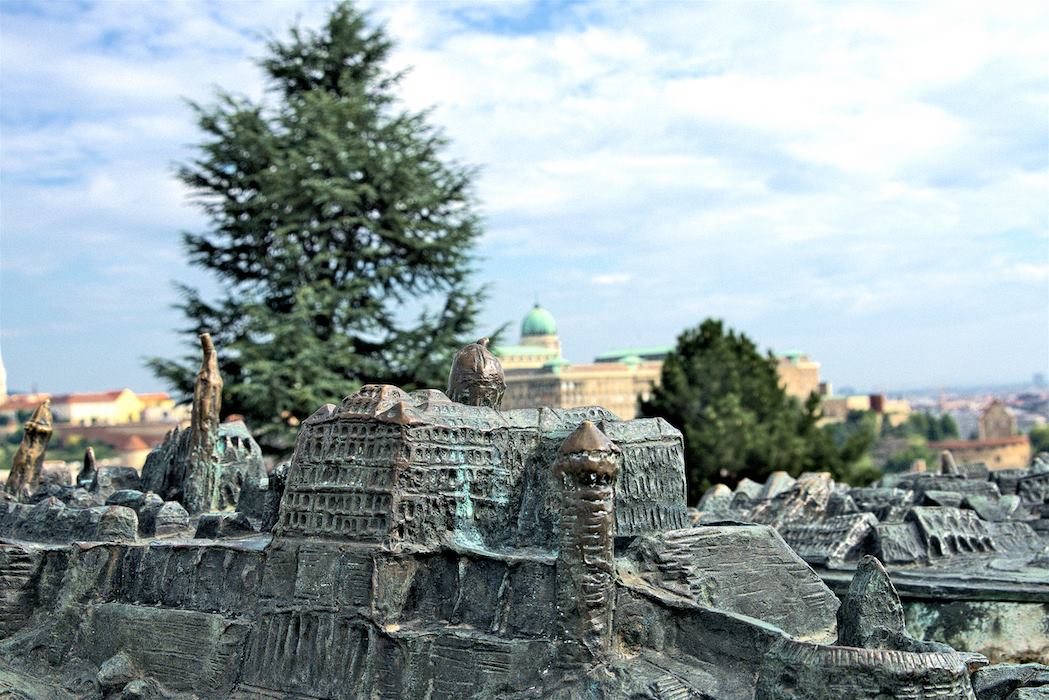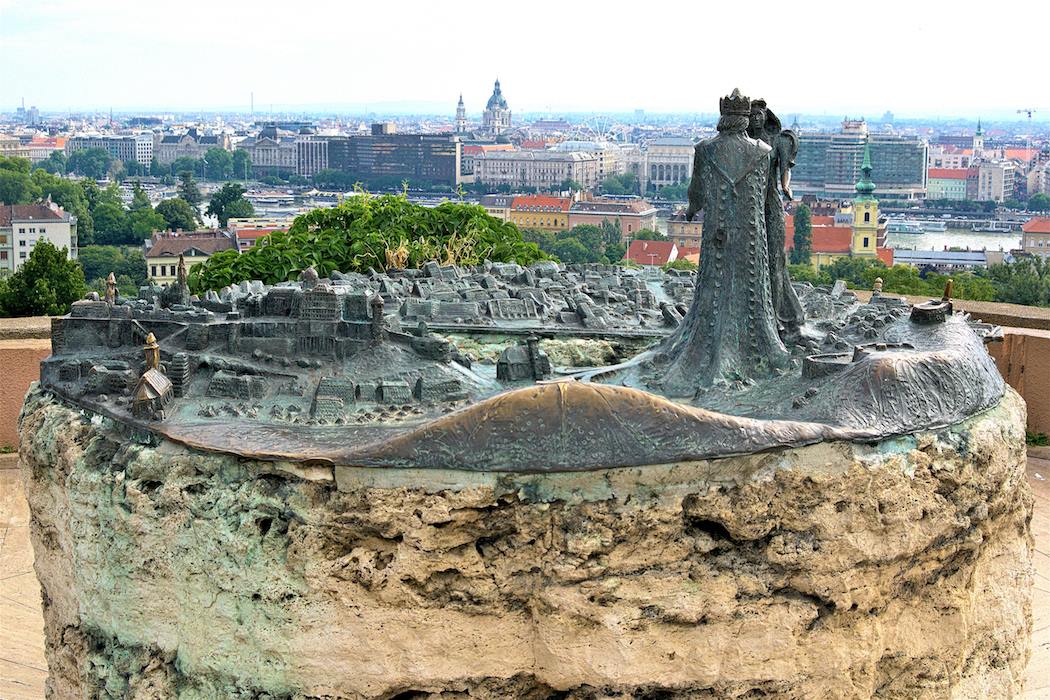Have you ever heard the story or seen the statue of Prince Buda and Princess Pest? – PHOTOS

According to the legend, Prince Buda wanted to embrace Princess Pest, but could not due to the River Danube. A splendid statue depicts the tale near the Garden of Philosophers and Nelson Mandela Park, close to the symbolic Gellért Hill Citadel. Here’s the story and some photos of the statue of Prince Buda and Princess Pest.
Was Buda a prince plotting against Attila, the ruler of the Huns?
Budapest has several hidden wonders we can discover only if we spend months or even years living in the magical Hungarian capital. One of the breathtaking places you should check out if visiting or living in Budapest is the Statue of Prince Buda and Princess Pest.
This piece of art was erected in 1982 and is the work of Márta Lesenyei, a Hungarian sculptor and artist of the Zsennye Art Residency. She works with wood, stone and bronze, and her statue overseeing Buda and Pest from a hilltop of the Gellért Hill was made of the latter.
If you have never heard the story of Prince Buda and Princess Pest before, you should not be ashamed. That is because such a legend does not exist. According to the made-up legend, Buda was the traitor brother of Attila, the King of the Huns. Allegedly, he plotted against his brother while he was away at war, but when Attila returned, he killed him in a duel. Based on the legend, Buda was named after him.

Of course, that is just a tale. Nobody ever named a settlement after a traitor, even if he (or she) was his (or her) sibling. Moreover, nobody could ever prove the existence of Buda. Only Attila existed, regarded as a heroic leader by the Turkic and the Hungarian peoples and serving as a metaphysical foundation for the Turkic-Hungarian cooperation.
The statue of Prince Buda and Princess Pest offers a breathtaking panorama of the city
Nonetheless, the statue of Prince Buda and Princess Pest is still astonishing. It is located near the Garden of Philosophers and close to the Gellért Hill Citadel, overlooking Budapest, so visitors can easily spot almost all the popular sightseeing places of the city from the hilltop lookout. Click HERE for the Google Maps position.
According to National Geographic, its official Hungarian name is Kilátókő-szobor (the Statue of the Lookout Rock). The statue’s creator is Márta Lesenyei (94), but the stone composition was made by another artist, György Vadász. It was made of stone and bronze, and it is 150 cm tall. The canyon between the two stones of Buda and Pest symbolises the Danube. The prince and the princess would like to embrace, symbolising the need for the unification of Buda, Óbuda and Pest, which were separate settlements until the end of the 19th century.

Budapest was not always a unified city: it was created from the aforementioned three settlements in 1873. Óbuda evolved on the former Roman town of Aquincum, and probably the name Buda also derived from the Slavic translation (“voda”) of the Latin “aqua” word meaning water. That is fairly understandable since Budapest has always been a city of fountains, baths, and pools. Aquincum was already famous for its baths in the Roman Empire.
Budapest celebrated its 151st birthday on 17 November. The city celebrated in many ways, e.g. with a party tram.
Here are some photos of the beautiful artistic composition:
Read also:
- 5+1 must-visit locations in Budapest with jaw-dropping panoramas – check out our article HERE
- Spending only 3 days in Budapest? Here’s our detailed tour guide! – details in THIS article
Source:













